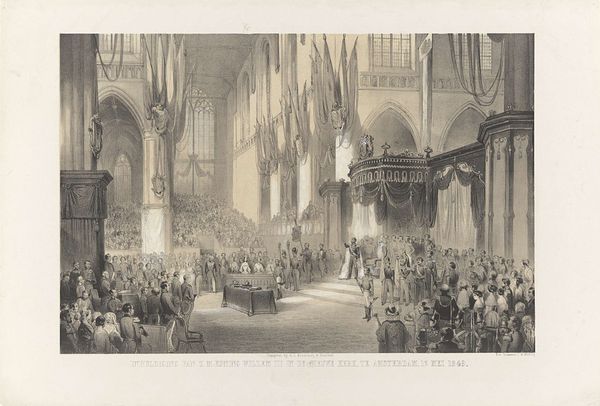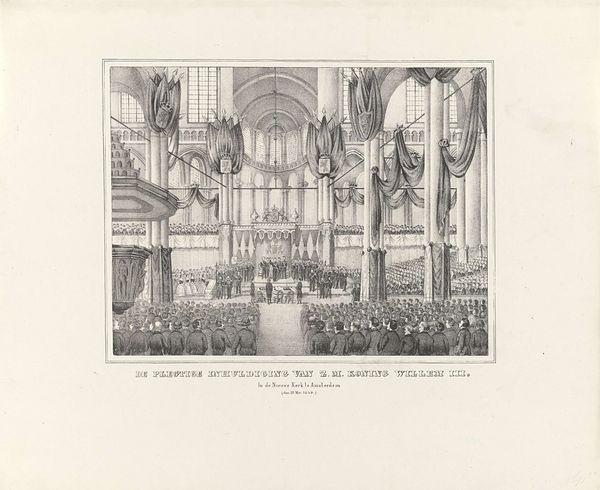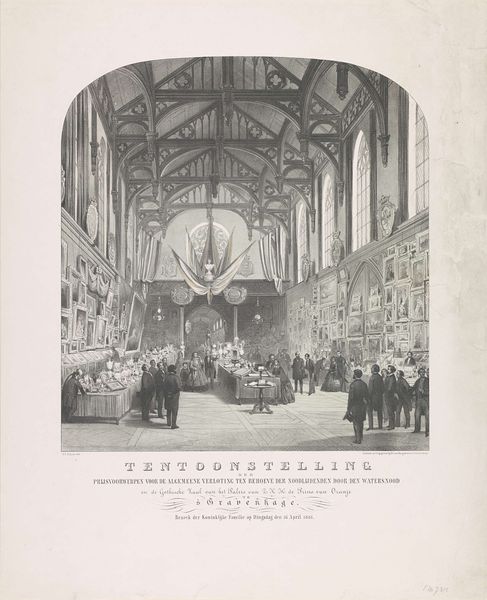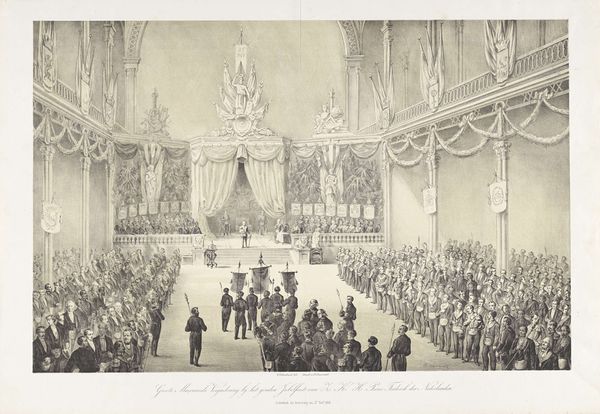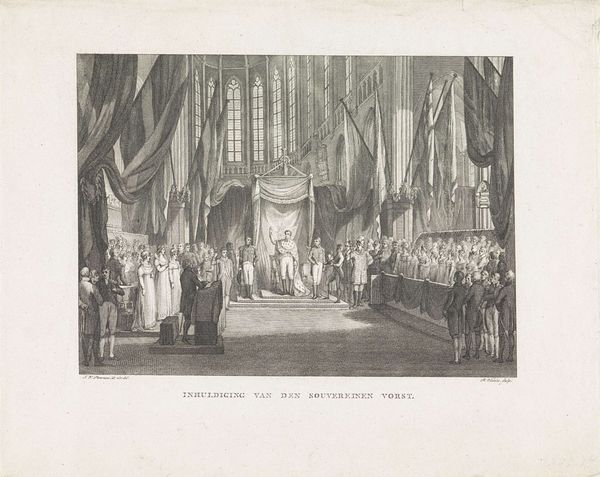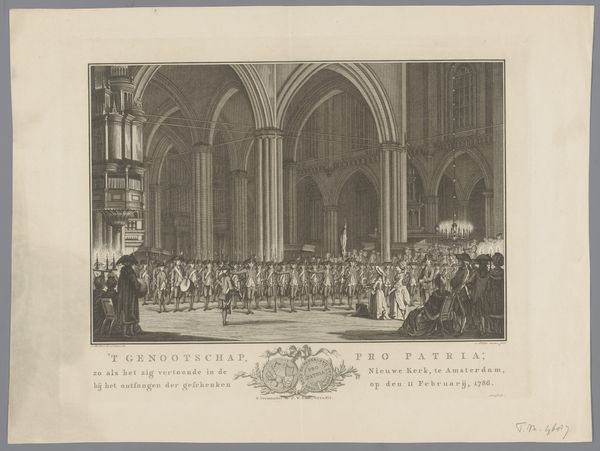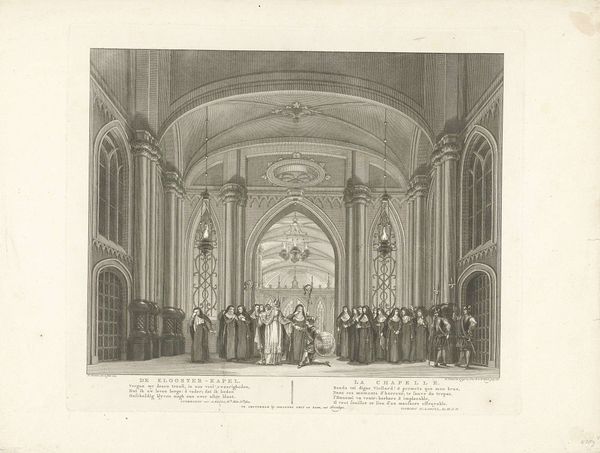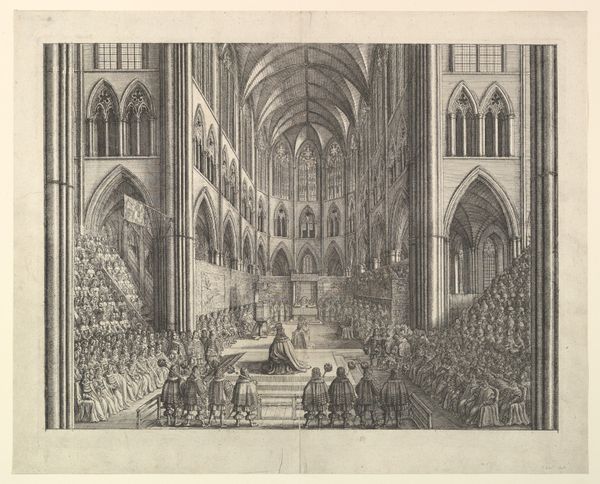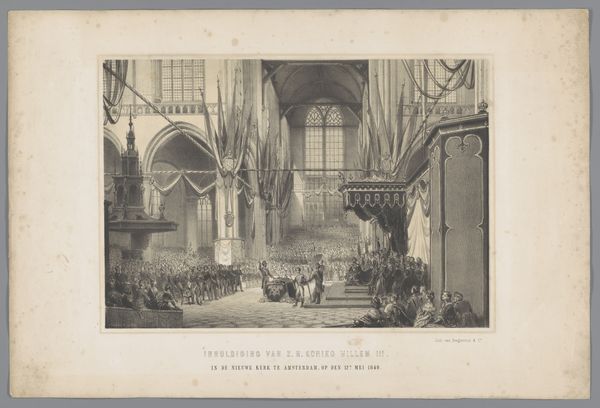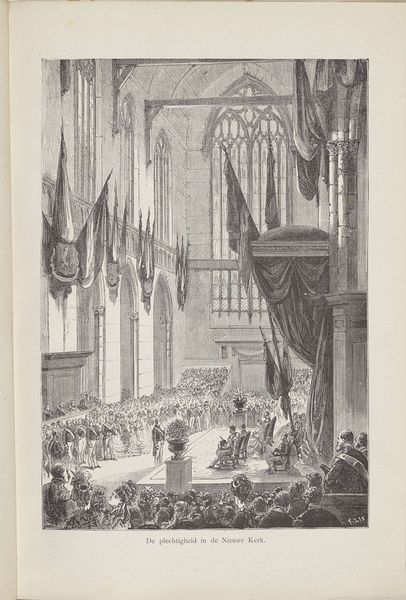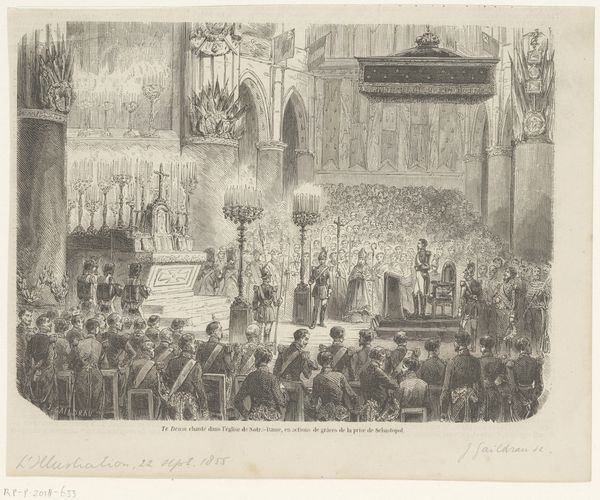
Inhuldiging van Z:M: Willem. II. In de Nieuwe Kerk te Amsterdam den 28 November 1840 1840
0:00
0:00
print, engraving
#
ink paper printed
# print
#
old engraving style
#
genre-painting
#
history-painting
#
academic-art
#
engraving
#
realism
Dimensions: height 387 mm, width 477 mm
Copyright: Rijks Museum: Open Domain
Editor: We're looking at "Inhuldiging van Z:M: Willem. II. In de Nieuwe Kerk te Amsterdam den 28 November 1840," an engraving from 1840 by George Coutteau. It's a very detailed print, and I’m struck by the artist's ability to capture the grandeur of the space, despite it being a black and white print. What are your initial thoughts on this depiction of King Willem II's inauguration? Curator: The image is fascinating in that it functions almost as a piece of political propaganda. Consider the scale of the event within the architectural immensity of the Nieuwe Kerk. How does this architectural context influence the viewer’s perception of the monarchy’s power? The very public display, rendered for mass consumption through print, solidifies Willem II's image as a legitimate and divinely sanctioned leader. It's not just history, but carefully constructed imagery meant to shape public opinion. What does it suggest to you about the role of visual media in solidifying power at the time? Editor: So, the artist isn't just recording history but also shaping how people see the monarchy. The choice of an engraving for wide distribution makes perfect sense now. Did the public have much say at the time, or was the monarchy mostly projecting this image of power? Curator: That's a critical question. While constitutional monarchy was developing, images like these played a role in constructing consent and national identity. Think about who controlled access to this imagery. Elites commissioned and distributed prints. The masses receive. This controlled dissemination underscores the limited participatory role available to common citizens. It shows how visual culture supported prevailing hierarchies, masking potential unrest with spectacles of unity. Editor: I never thought of it that way, as a carefully managed PR campaign almost. Thank you for shedding light on that! It changes how I view historical artworks. Curator: Absolutely! Recognizing the subtle political messaging encoded in seemingly objective depictions like this engraving truly allows a more enriched experience with history and art.
Comments
No comments
Be the first to comment and join the conversation on the ultimate creative platform.
